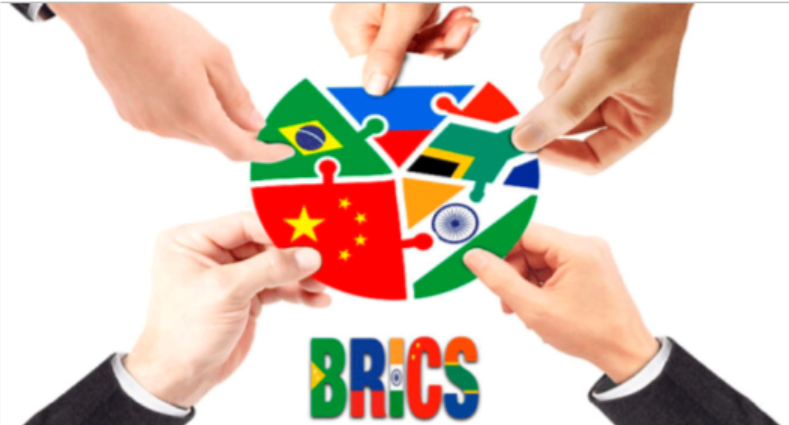Physical Address
Indirizzo: Via Mario Greco 60, Buttigliera Alta, 10090, Torino, Italy
Physical Address
Indirizzo: Via Mario Greco 60, Buttigliera Alta, 10090, Torino, Italy


Africa, which for the first time brought together the G20 through South Africa, in November 2025, saw the defections, although represented, of the American, Chinese and Russian presidents, Xi Jinping and Donald Trump and of Putin, while these three countries represent more than 50% of the world GDP and which are the major polluters. The ranking based on the total value of goods and services produced by each country, without adjustment for purchasing power, what is called nominal GDP, according to the latest data published by the International Monetary Fund (IMF) and compiled by Statista and Statistics Times, the 10 largest world economies on global GDP estimated in 2025 at 113,800 billion dollars (growth varying between 3.0 and 3.3%) are the USA 30.507 billion dollars, China 19.231, Germany 4.727, India 4.187, Japan 4.186, United Kingdom 3.839, France 3.211, Italy 2.422, Canada 2.295, Brazil 2.126 followed by Iran, South Korea, Australia, Mexico and Spain. While the USA and Europe, with less than a billion inhabitants, represent more than 40% of world GDP and although China comes second in terms of nominal GDP with 1.4 billion inhabitants, it still has a long way to go to have the GDP per capita of the USA or Europe. For the United States, GDP per capita was approximately $69,375 in 2023.
The European Union has a GDP per capita lower than that of the United States, but higher than that of China, with a GDP per capita of around $79,637 in 2023 and China’s GDP per capita was around $12,290 in 2024. For Africa, South Africa retains its place as the continent’s leading economic power in 2025, with a nominal gross domestic product (GDP) estimated at over 410 billion dollars, followed by Egypt, with 347 billion dollars, by Algeria, with 268 billion dollars. In fourth place is Nigeria with 188 billion dollars, Morocco with 165 billion dollars in GDP, Kenya 131 billion, Ethiopia 117 billion, Angola 113 billion, Ivory Coast 94 billion and Ghana 88 billion dollars, which close the top 10. As for Tunisia, it is in 13th place in the African ranking, with a GDP estimated at 55 billion dollars, confirming its position among the continent’s average economies. Overall, Africa, which nevertheless has significant potential, has a GDP of around 4,000 billion dollars in 2024 for a population of 1.4 billion inhabitants.
For South Africa, which holds the presidency of the G20 for the first time, the stakes are crucial. Pretoria intends to make this meeting a key moment to strengthen the place of African economies in global discussions. It remains to be seen whether these ambitions will be able to prevail in a summit whose absence of several leaders could reduce the political and symbolic scope, although South African President Cyril Ramaphosa has tried to minimize these absences, this poses a challenge to diplomatic influence and their impacts on the South African road map which focuses on priority themes: debt sustainability, energy transition, climate resilience of developing countries on the need to overcome trade barriers and geopolitical risks that slow down growth. worldwide.
Remember that the members of the G20 are the following 19 countries: South Africa, Germany, Saudi Arabia, Argentina, Australia, Brazil, Canada, China, South Korea, United States, France, India, Indonesia, Italy, Japan, Mexico, United Kingdom, Russia, Turkey the European Union and, since 2023, the African Union but dominated by the West, except for the weight of China, whose main trade flows are with the couple USA/Europe, including the G7 which are Germany, Canada, the United States, France, Italy, Japan and the United Kingdom, with the European Union also participating in the meetings as an unnumbered member.
In 2024, the economic weight of the G7 in global GDP will fall to around 29%. The United States represents the largest share with almost 60% of the total economic weight of the G7. As for the economic weight of the G20 including many emerging countries, it is estimated at approximately 80.4% of world GDP, representing 79.3% of the population and 79% of world trade, being the main forum for international economic cooperation, bringing together the main developed and emerging economies of the world. Faced with Brics+ in order to free ourselves from domination and in particular by the USA, the West, we are witnessing the birth of other organizations, notably the Brics composed of Russia, India, China, South Africa and Brazil, with six new members since then in Brics+, (in the meantime, Argentina having withdrawn), including Saudi Arabia, Egypt, the United Arab Emirates, Ethiopia, Iran. The group of 10 becoming the Brics+ which had met will meet in Kazan in Russia from October 22 to 24, 2024 created a group of partners, comprising 13 countries, including Algeria, Belarus, Bolivia, Cuba, Indonesia, Kazakhstan, Malaysia, Nigeria, Uganda, Serbia, Thailand, Turkey and Uzbekistan. Its members and observers discussed strategic issues including the reform of the governance of the International Monetary Fund (IMF), the recognition of the multipolarity of global economic and political balances, breaking with the organizations inherited after the Second World War. The Russian president even proposed a Brics Parliament which is an economic alliance in order to make it a more organized political alliance in order to have influence in international discussions and against possible unilateral sanctions, but this proposal was not unanimous. China is currently the driving force of this organization, the second largest economy in the world, the largest exporter and an increasingly important investor and to fuel its exports and domestic consumption, importing considerable volumes of raw materials and semi-finished products throughout the world. Free trade agreements have been concluded, notably between China and South Africa, and again between Brazil and Russia, aimed at reducing trade barriers, harmonizing standards and facilitating transactions, providing for a reduction in customs tariffs between member countries, thus facilitating the movement of goods and services. For the moment, the results are mixed, with the intensification of intra-Brics trade, economic and logistical infrastructure being necessary to ensure that trade flows where according to some international data at least 80% of the increase in trade between the different Brics involves China with an increase between India and Russia. For the organizers at the last Kaza meeting in Russia, the GDP of the Brics+ would amount to “more than 60,000 billion dollars, and its total share in the gross world product exceeds the corresponding indicators of the so-called G7 group and continues to grow”.
In order to try to free itself from the Bretton Woods institutions set up after the Second World War (International Monetary Fund and World Bank) the Brics Development Bank was created which was inaugurated on July 15, 2014 on the occasion of the 6th summit held in Fortaleza in Brazil, Bangladesh the United Arab Emirates becoming members in 2021, Egypt in 2023 and Algeria in 2024 (see interview with Professor Abderrahmane Mebtoul on October 18, 2024 on Chinese International Television CGTN) and currently chaired by Dilma Rousseff, current president of the NDB and former president of the State of Brazil, A presidential decree was published in the Official Journal (JO) No. 38, authorizing Algeria’s subscription to the capital of the New Development Bank (NBD) up to 6,140 shares, as part of its membership in this financial institution for an amount of approximately 1.5 billion dollars. The objective of this bank aims to free itself from the Bretton Woods institutions set up after the Second World War (International Monetary Fund and World Bank), established around the Swift (Society for Worldwide Interbank Financial Telecommunication) and Chips (Clearing House Interbank Payments System) systems, by attempting to use currencies other than the US dollar in commercial exchanges between Brics+.
The advantages of the New Development Bank would be the promotion of the use of the national currencies of the member countries, which could promote internal trade and reciprocal investment of these countries, thus reducing dependence on the dollar and the establishment of a sustainable payment mechanism for bilateral trade of the BRICS countries and the medium and long term objective would be the creation of a common currency backed by the level of foreign exchange reserves and gold. But three conditions are necessary and must take into account divergent strategies, notably between two heavyweights, China and India, ideologically close to the USA: firstly, significant foreign exchange reserves from member countries to supply this Bank depending on the increase in their GDP, knowing that in 2023 for around a billion inhabitants (Europe plus USA) will monopolize more than 40% of world GDP estimated at 103,000 billion dollars. However, depending on their budgetary situation, only China, Russia, Saudi Arabia and the United Arab Emirates can contribute substantially.
Abderrahmane Mebtoul
University professor,
(To be continued…)